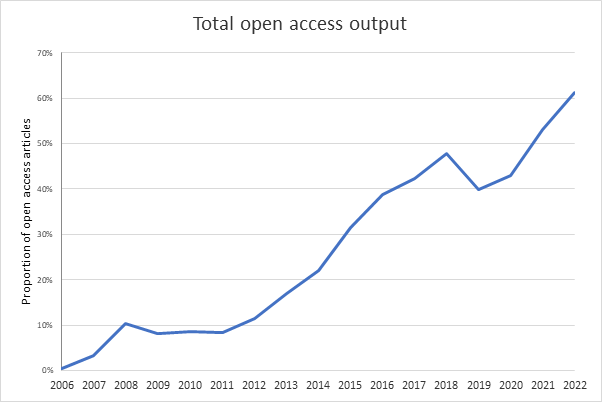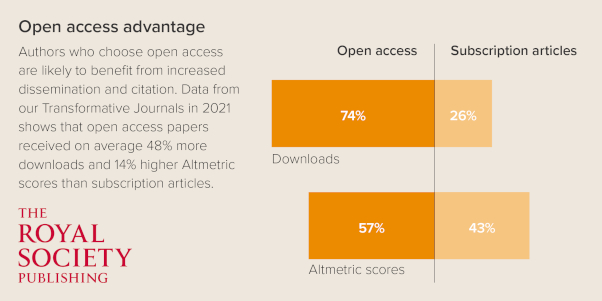As the national academy of science for the UK, we support open access and open science to maximise the dissemination and re-use of research outputs.

As the national academy of science for the UK, we support open access and open science to maximise the dissemination and re-use of research outputs.
In 2021 the Royal Society committed to flip its hybrid research journals to open access and make more of its world-leading research available to all. Proceedings A and B, Interface and Biology Letters will flip to a fully open access model when 75% of articles are being published open access. To underscore this commitment, we registered these journals as ‘Transformative journals' under Plan S.
How is it going?
We are pleased to report that across the portfolio we have reached 61% open access in 2022 and our 2022 Transformative Journal targets have been met for all four journals.
| Journal | Target % open access | Actual % open access |
| Proceedings A | 32.3% | 40.40% |
| Proceedings B | 48.2% | 51.1% |
| Interface | 56.0% | 56.60% |
| Biology Letters | 34.3% | 48.40% |

This rate of progress has been driven strongly by the success of our Read & Publish agreements with major research institutions. Read & Publish agreements enable corresponding authors to publish papers as open access without paying an article processing charge as the charges are covered by their library.
Supporting the transition
Awareness
We want to ensure that every researcher working at an institution signed up to one of our Read & Publish agreements to be aware that they can publish their work open access with the Royal Society without paying an Article Processing Charge (APC). Find out if your institution is covered and help support our transition to open access by making your colleagues aware.
More generally, it is important for researchers to understand the benefits of open access. Apart from opening the record of science to the widest possible audience, authors who choose open access publication are likely to benefit from citations and impact.

Checks for eligibility
With Read & Publish being quite a new thing, many authors may not be aware of the opportunity it offers. Therefore, we make every effort to check the eligibility of our articles and, if necessary, remind authors about this opportunity.
Increasingly, authors outside Read & Publish have APC funding available to them from other sources (such as project grants, fellowships and dedicated institutional funds. So we make the benefits of publishing open access clear to them too.
Investing in technology
Last year, we partnered with CCC/Rightslink for Scientific Communications to streamline and automate our existing workflows to make the process as frictionless as we can. This means that for authors from Read and Publish institutions open access is transacted and recorded automatically with them having to worry about paying APCs. For other authors payment is much simpler too.
We are also a founding member of the community-led Open Access Switchboard - a neutral, independent intermediary which provides shared infrastructure and standards to enable publishers, academic institutions and research funders to seamlessly communicate information about open access publications.
Looking forward
We are delighted with the rate of progress of our journals thus far and in 2023 we will significantly increase the number of institutions taking up our offer of Read & Publish. If the present rate of progress is maintained, we fully expect to be able to start flipping our hybrid journals to full open access mode within the next two years and to playing our part in opening the scholarly record to all.




